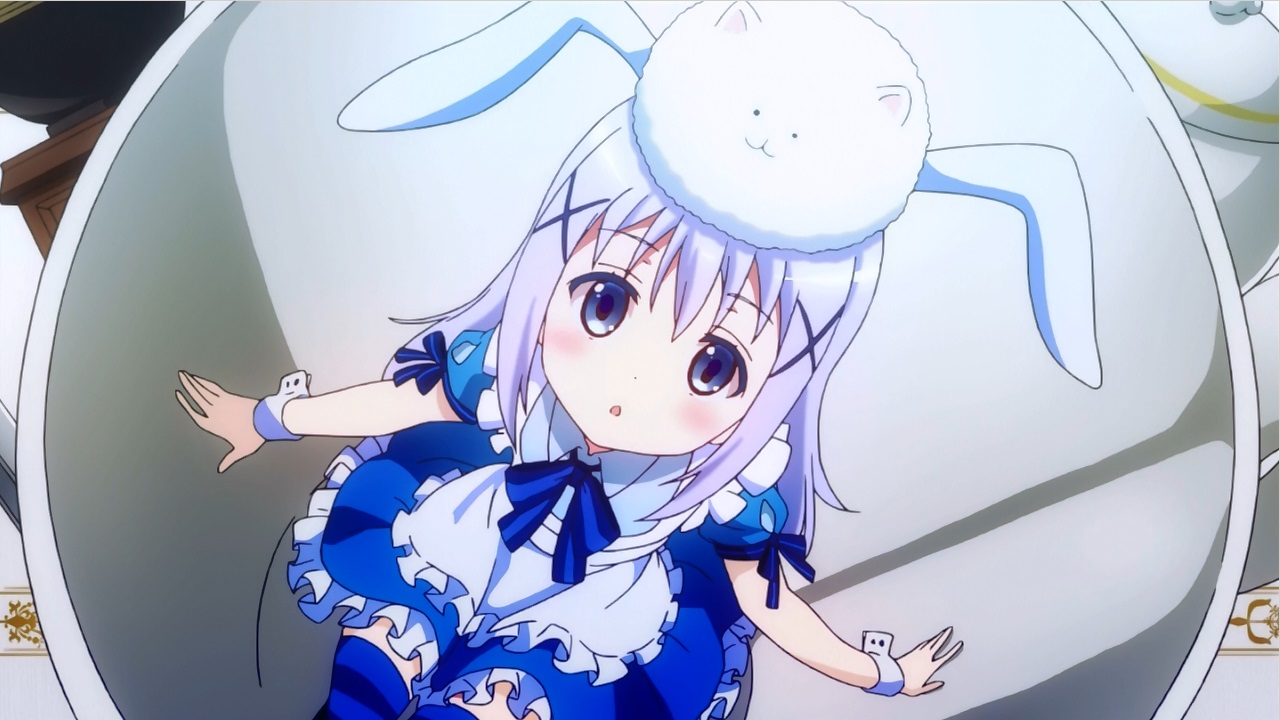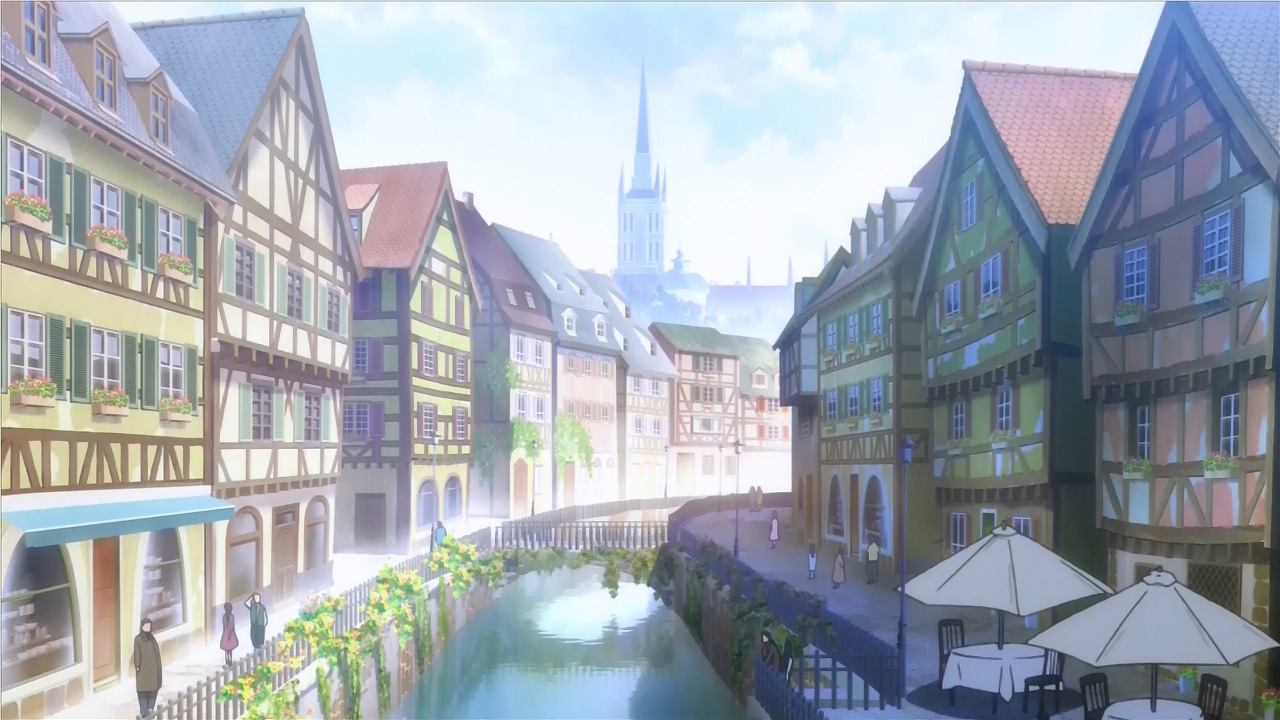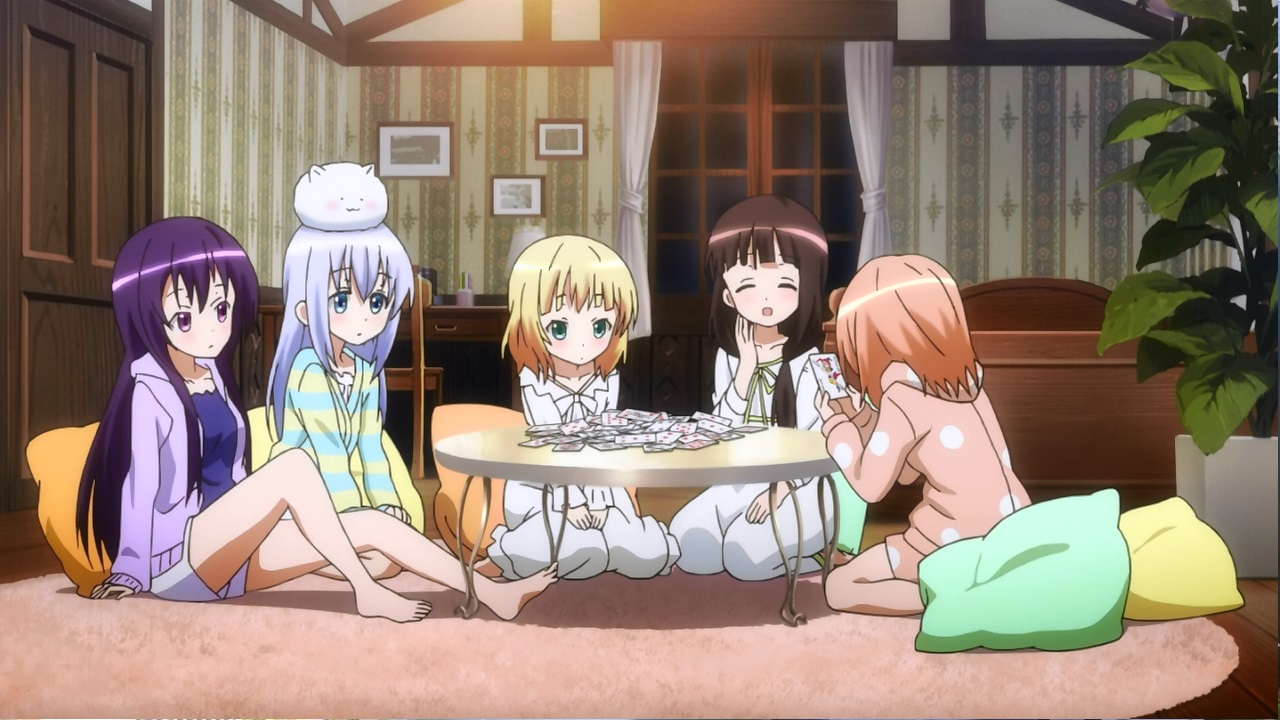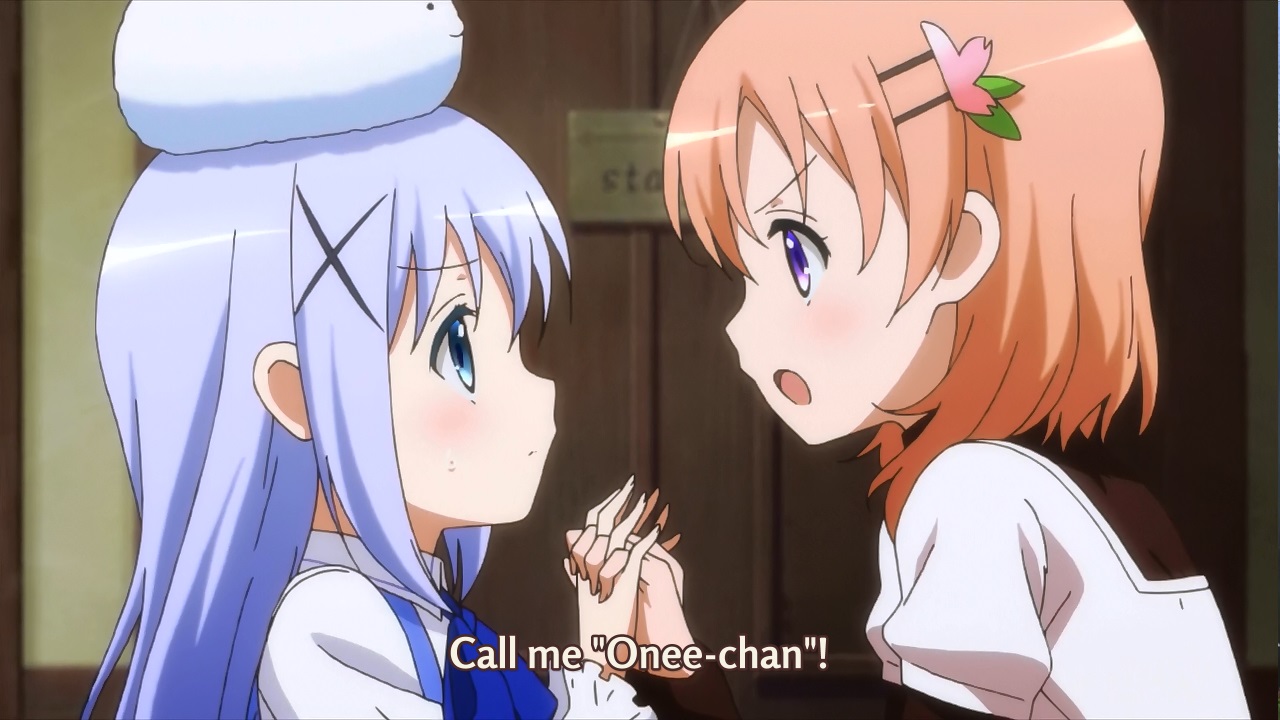Cocoa is going to high school in a strange town, living with a host family that runs a coffee shop called Rabbit House. It’s in the coffee shop she meets her ideal little sister:

Gochuumon wa Usagi desu Ka —Is the Order a Rabbit in good English — is what I call a slice of moe show. Cute girls doing cute things, with no real plot to speak of. Instead the focus is on how the characters interact with each other as they go about their daily lives. The appeal of this sort of show is twofold. First, there’s the ersatz emotional labour of seeing those characters going about their lives. (It’s not a coincidence most such shows feature high school girls.) You get to the comfort and togetherness of a close group of friends without having to do the labour for it. Second, it’s relaxing. In an uncertain, anxiety riddled world the slow tempo and predictable nature of these shows is comforting. Obviously there can be a sexual element to this, but the real appeal is cuteness. The same thrill as watching a nest of kittens play with each other, to put it bluntly. At its worst, this can be pandering crap, but at its best it offers a catharsis unlike any other genre.

Where Gochuumon wa Usagi desu Ka is that it does not revolve around school or a school club. School is a natural setting for a slice of moe series, as it makes it easy to throw a bunch of characters together. High school in Japan is also supposedly the last time that you have some degree of freedom, before the maelstrom of study and work swallows you up. Having a high school setting therefore evokes a powerful nostalgia in an adult audience. But Gochuumon wa Usagi desu Ka eschews this familiarity, opting for a different sort of nostalgia. The town in which the series takes place looks like it belongs somewhere in Mittel Europe, picturesque and gorgeous, if a bit chocolate boxy. From the very first shot it’s a large part of the appeal of the series. These long, wordless establishing shots not only sell the beauty of the setting, but also slows down the pace of its narrative.

The interiors too have that old worldy charm, especially Rabbit House, where the main characters work and live. Rize is the eldest, a cool beauty who lacks a bit of common sense and a military otaku. Chino is the ideal little sister if she would just allow Cocoa to claim her as such, but a bit emotionally distant. Syaro and Chiya are childhood friends, the latter works at a Japanese dessert shop and is a bit of a troll, while the former looks like a rich ojo-sama but is actually poor. Cocoa finally is an airhead, over enthusiastic but with a heart of gold. There are also the two middle school friends of Chino to round out the cast, who delight in playing up Cocoa’s elder sister complex and tease Chino. All of these are fairly recognisable archetypes for a slice of moe anime and any character growth is slow and subtle. But they play well of each other. Syaro and Chiya bicker like old friends do, but when Syaro is with Rize, she turns into a blushing mess thanks to her crush. Chiya and Cocoa meanwhile get along very well too, sharing a similar sort of humour.

But the heart of the series lies in the slow evolution of Cocoa and Chino’s relationship. Cocoa desperately wants to be a good big sister to Chino and Chino is just as adamant in her refusal to call her that. Nevertheless they do grow closer and Chino does grow fonder of her strange new friend. When I first watched this series in 2015 I found this all a little superficial, but rewatching it I can enjoy the subtleties. It was thanks to HolyAjora’s tweets that I fancied a rewatch. If you want a more indepth look at this series, you could do worse than read that thread and its season 2 follow up.